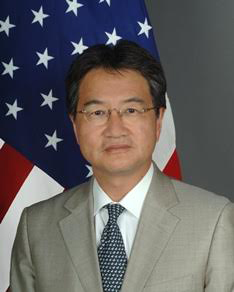Over the last month, tensions over the increasing militarization of the Spratly Islands have been growing due to disputes over freedom of navigation rights.
The Spratly Islands—the center of recent contests—are made of tens of thousands of islands and reefs in the waters largely centered between the Philippines, Malaysia, Brunei and Vietnam.
China has been building a man-made island by dredging soil and amassing it upon a submerged coral reef. Claims over ownership of the South China Sea, where the land reclamation is occurring, have been made by China, Vietnam, Malaysia, the Philippines, Brunei and Taiwan. These claims often overlap one another.
According to an Associated Press story on Oct. 17, since 2012 the U.S. has disputed China’s claims over the area, arguing that land reclamation does not constitute sovereign territory.
Land reclamation by China and the building of an airstrip and lighthouses have been the cause of the recent tension. Both the Philippines and the U.S. have opposed the lighthouse construction by China, according to Reuters.
Reuters describes the area as both “energy-rich” and “through which $5 trillion in ship-borne trade passes every year.”
“Oil is a driving factor of the disputes,” said Xiaoyu Pu of the University of Nevada, Reno (UNR). “The discovery of oil and energy in the area made these disputes more salient. But other factors, such as geopolitical competitions, historical legacy, and nationalism, also matter.”
Pu is an expert of Chinese foreign policy at UNR. He is writing a book on China and international politics, and has already been published in multiple books and publications on the subject, according to his bio at UNR.
According to a BBC News report, after a U.S. plane was “warned off eight times” from approaching, the U.S. made threats of sailing military ships into the area. The two countries have had a continuous back and forth ever since.
According to Reuters, the U.S. states that the waters are international and that international law does not allow the claiming of territory around artificially created land. Therefore the U.S. has said it will exercise its freedom of navigation (FON) rights in the area.
Hua Chunying, China’s foreign ministry spokeswoman, has alluded that it is the U.S. who is militarizing the area, according to the BBC.
“I want to point out that some countries, in a region far from their own lands, have deployed offensive weaponry on a large scale and flexed their military muscles again and again in the South China Sea,” Hua was quoted as saying on Oct. 14 by Reuters.
The U.S. has been considering entering within the 12-nautical-mile airspace of the Spratly Islands, while China has said they will not allow that to happen within their territory and airspace within the Spratly Islands, according to the BBC.
Vietnam is involved in the disputes as well. According to U.S. News, reporting on an AP interview, “Vietnam’s president told the Associated Press on Monday that China’s island-building in the disputed South China Sea violates international law and endangers maritime security.”
The U.S. and Vietnam recently agreed on a Trans-Pacific Partnership, which involves twelve Pacific rim countries, and includes Malaysia and Brunei, which are close to the Spratly Islands, but excludes China and the Philippines.
“If American and Chinese navies handle the issue prudently and professionally,” Pu said, “that might reserve some space for these Asian countries to settle their disputes later on. China has strong economic ties with all these disputants, as well as with the United States. Maintaining regional peace serves the long-term interests of all countries.”
Despite Chinese President Xi Jinping’s recent visit to the U.S., it seems that once again China and the U.S. are on tense ground. While bilateral trade is important to both countries, and appears to be improving, political shows of power on both sides are upsetting the region’s balance.






